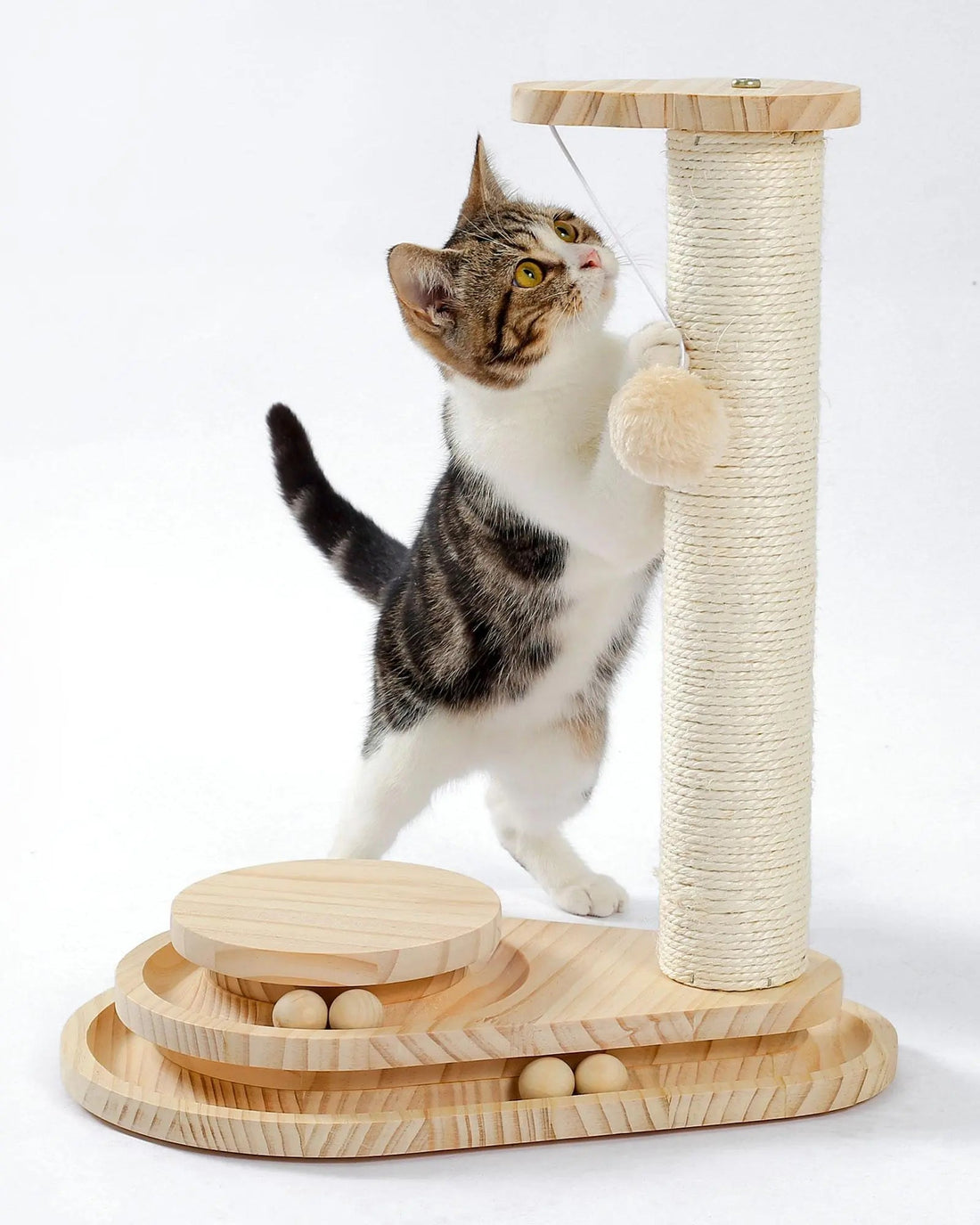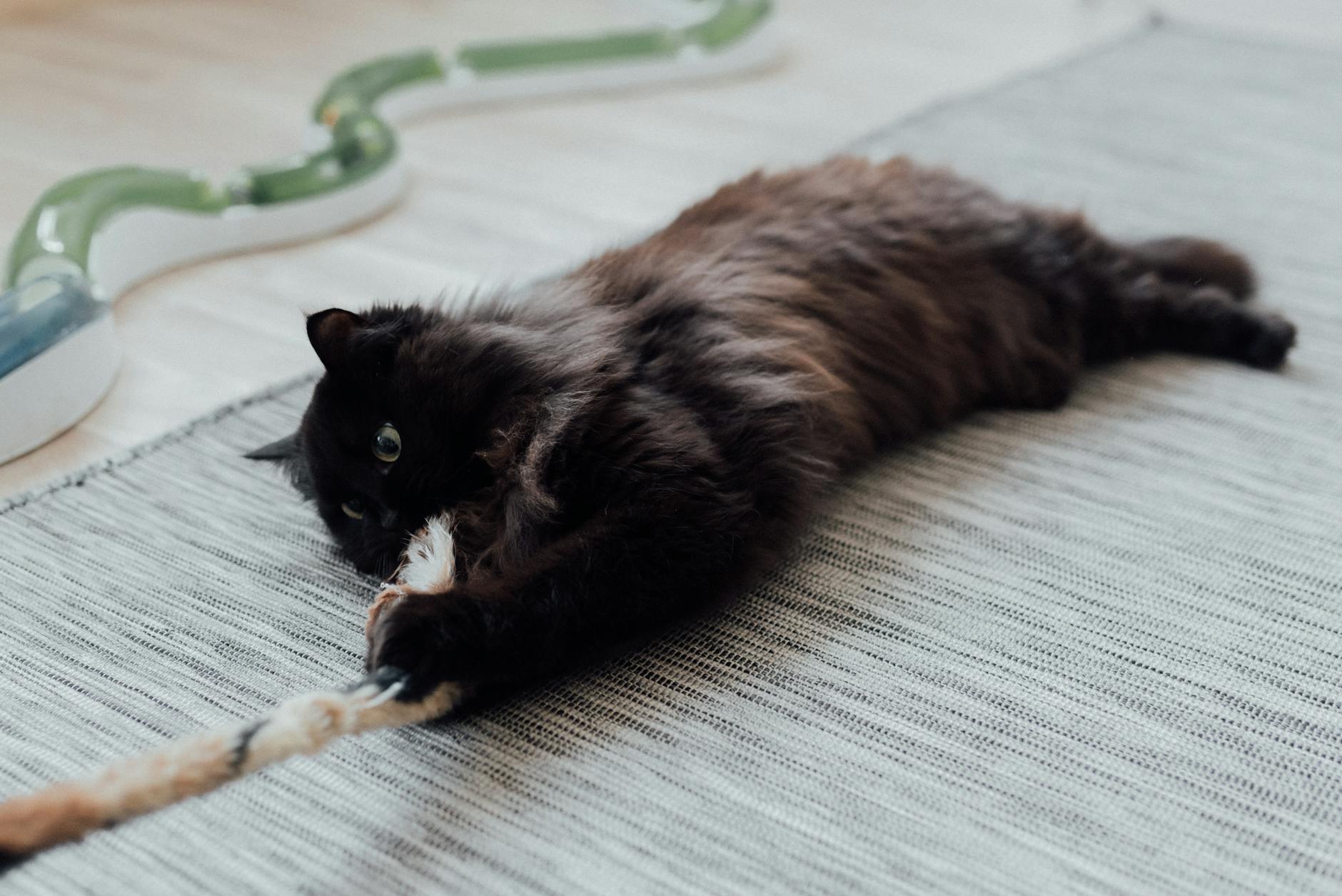
How to Keep Indoor Cats Entertained: Proven Ways Keeping Indoor Cats Happy 2025
Share
How to Keep Indoor Cats Entertained (Practical Strategies That Work)
Indoor cats bring calm, comfort, and comic relief. They also get bored fast. Boredom in cats shows up as stress, nighttime zoomies, or scratching the couch you love. If you have asked how to keep indoor cats entertained, you already know the stakes. A smart plan keeps your cat engaged and your home intact.
This guide breaks down what works: toys that mimic the hunt, an environment built for movement and exploration, daily activities that sharpen the mind, and quick answers to common questions. Keeping indoor cats happy is a system, not a guess.
Fun Toys to Spark Your Cat's Play Instinct
 Photo by Arina Krasnikova
Photo by Arina Krasnikova
Cats thrive when toys mimic prey. Feather wands, laser pointers, and crinkle balls trigger chase, pounce, and catch. These movements burn energy, build coordination, and sharpen focus. They also redirect that claw energy away from furniture.
Rotate toys weekly to keep novelty high. Store half of your stash out of sight, then swap. Choose cat-safe materials like natural feathers, soft felt, and sturdy plastic. Skip loose strings or small parts that can break off. Supervise laser play, end with a toy the cat can catch, and never point lasers at eyes.
Best Interactive Toys for Daily Play
- Feather wand with elastic cord: Simulates birds, great for sprints and leaps, strong bonding tool.
- Treat-dispensing ball: Rewards movement with food, slows fast eaters, adds mental work.
- Collapsible tunnel set: Sparks hide-and-seek, supports ambush play, folds for small spaces.
- Motion-activated mouse: Triggers curiosity on its own, good for solo play, supervise for safety.
How to Set Up Playtime Routines
Plan two sessions per day, 15 to 20 minutes each. Start with fast chase, then slow to stalking and capture. This mirrors a hunt cycle and reduces nighttime restlessness. If you need a simple plan for how to keep indoor cats entertained, rotate toys, vary speed, and match your cat’s energy.
Build an Enriching Home Environment for Your Cat
An engaging home reduces stress and couch naps that last all day. Vertical paths, cozy lookouts, and sensory cues turn rooms into a territory worth exploring. This helps with weight control and supports natural behaviors like climbing and surveying. Long term, keeping indoor cats happy improves litter habits and reduces nuisance meowing.
DIY saves money. Use sturdy shelves, a thrifted bookcase with grippy mats, or a window seat with a suction-cup perch. Place features near windows or warm spots for maximum use.
Vertical Spaces and Climbing Spots
Add a stable cat tree, wall shelves spaced like stairs, or a corner perch. Anchor shelves into studs, use wide brackets, and add non-slip tape. In small apartments, run shelves above doors or over couches to create a safe highway.
Sensory Stimulation with Scents and Sounds
Offer catnip or silvervine toys once or twice a week. Set a bird feeder outside a window to create “cat TV.” Play soft classical or nature sounds during quiet hours. Keep sessions short for shy cats and add hiding spots to reduce stress.
Daily Activities to Bond and Stimulate Your Indoor Cat
Mental work pays off. Short training, puzzle feeders, and gentle touch sessions reduce anxiety and build trust. These routines support how to keep indoor cats entertained without chaos. Watch treats. Use small pieces of boiled chicken or freeze-dried snacks, and subtract treats from daily calories.
Simple Training Games for Mental Fun
Teach sit, touch, or spin using a clicker and tiny rewards. Mark the behavior, then treat. Keep sessions under five minutes. In multi-cat homes, train one cat at a time to prevent crowding and food guarding.

Puzzle Feeders to Challenge Their Smarts
Use slow-feed bowls, treat mazes, or hide small portions in multiple spots. Start with easy puzzles to build confidence. Stick to measured meals to maintain weight. Level up difficulty only when your cat solves the current setup with ease.
Frequently Asked Questions About Entertaining Indoor Cats
What Are Signs My Indoor Cat Is Bored?
Look for excessive meowing, nighttime activity, over grooming, rough play, or scratching in new spots. Some cats withdraw and hide, others pace or ambush ankles. Add play sessions, rotate toys, and build vertical routes. Engagement reduces anxiety and supports keeping indoor cats happy without chaos.
Are DIY Toys Safe for Cats?
Yes, with care. Cardboard boxes, paper bags without handles, and towel forts are great. Avoid ribbon, yarn, and hair ties unless you supervise, since they can be swallowed. Check for staples, tape, and sharp edges. Replace worn items before they fray or break apart.
How Much Playtime Does an Indoor Cat Need?
Aim for about 30 minutes per day, split into two sessions. Kittens and high-energy breeds often want more, seniors may want shorter bursts. Watch your cat’s cues. End each session with a toy they can catch to reduce frustration and promote better sleep.
Can Indoor Cats Be Happy Without Going Outside?
Yes. Build an enriched territory with climbing, perches, window views, and varied toys. Offer short, predictable routines that mimic hunting and foraging. Many cats relax indoors when their needs are met. The goal is safety, choice, and novelty, not outdoor access.
What If My Cat Ignores Toys?
Warm up the toy with movement that looks like prey, not random waving. Try different textures or scents, like silvervine if catnip fails. Use food motivation with treat balls or scatter-feeding. Keep sessions short, then stop before your cat loses interest to build anticipation.
How to Entertain Multiple Indoor Cats?
Create parallel play. Use two wands at once, or place puzzle feeders in separate zones. Give each cat solo time to prevent resource guarding. Build multiple exit routes on shelves and perches. Rotate toys so each cat finds something new without direct competition.
Conclusion
Indoor cats need a clear plan for movement, curiosity, and calm. Use hunting-style toys, build vertical and sensory zones, and add short training or puzzle sessions. Start with one change today, then track what your cat uses most. Share your wins in the comments. When you master how to keep indoor cats entertained, you protect your furniture, reduce stress, and support a healthier, happier cat.
